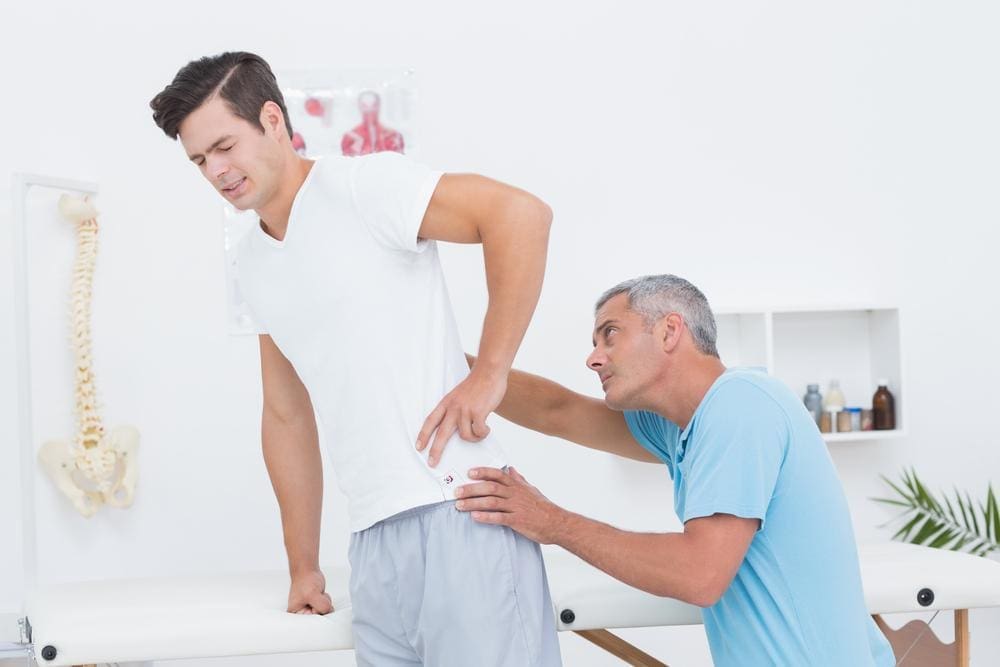
Luckily, hip bone spurs rarely trigger severe symptoms. However, seeking treatment and preventing the problem from worsening is still essential. Chiropractic care is a great way to manage hip bone spurs and slow the condition's progression.
What should you know about seeing a chiropractor if you’ve developed bone spurs?
The most common reason bone spurs form is due to the presence of osteoarthritis. The condition causes the cartilage cushioning between bones to break down. When the body tries to repair this loss of cartilage, bone spurs are created near the joint damage.
Older people have a higher risk of bone spurs. However, this isn’t because bone spurs are a normal symptom of aging. Instead, it’s because the older someone is, the longer they’ve likely been dealing with arthritis and issues with insufficient cartilage. Nobody should assume that bone spurs are a normal part of life because they don’t need to be.
Bone spurs rarely trigger side effects.
You’ll sometimes feel mild hip pain or experience a reduced range of motion. However, managing bone spurs is crucial despite this lack of pain. Over time, the problem can increase and eventually cause chronic pain.
Surgery is rare for people dealing with bone spurs.
Over-the-counter pain relief medication is the most common treatment for bone spurs that cause mild pain. Some people undergo steroid shots if there is inflammation or swelling.
Physical therapy is an option if someone is experiencing pain or concerned about the development of problems in the future due to hip bone spurs. It strengthens the muscle around the joint affected by a bone spur. It also helps you manage your movement to avoid nerve pressure in the area.

There are also several things you can do on your own to reduce the risk of bone spur pain:
Surgery is usually only recommended when other treatments do not work and the spur is pressing on a nerve, causing chronic hip pain.
Chiropractors begin by interviewing each patient and obtaining a detailed health history. They perform an examination, conduct tests, and develop a working diagnosis. Once they understand the problem, they develop a management plan, begin treatment, and monitor progress.
Specific chiropractic treatment includes:

One of the primary benefits of treating bone spurs with chiropractic care is that it is low risk. No medical treatment is risk-free. However, the risks of using chiropractic treatment are far less than surgery. It’s even less risky than some moderately invasive treatments like OTC medications and steroid shots.
Chiropractic care is also beneficial because it focuses on overall health and wellness. Although you might begin chiropractic treatments because of osteoarthritis or bone spurs, it can help you feel healthier overall. Most people find that seeing a chiropractor improves their quality of life. In addition to treating the specific issue, it treats minor problems that might otherwise develop into something more serious.
Bone spur development is often linked to a lack of movement. Chiropractic care ensures your joints move as they should regularly and that they are functioning as they are designed to function. It also determines what’s not functioning properly and works to restore normal movement.
This doesn’t reverse the degeneration of a joint. However, it can stop the progression and restore the normal range of motion. It’s one of the best ways to delay or avoid surgery.
Even if your hip pain eases or you don’t experience bone spur pain at all, it’s important to continue chiropractic maintenance. This ensures proper joint movement and decreases the speed at which bone spurs develop.
As they do with all patients, chiropractors tailor their treatments according to each person's specific needs. Treatments usually include gentle massages to ease muscle spasms and relieve tenderness. They also use active exercises and traction to stretch joints and increase the range of motion.
Finally, chiropractors help you take control of your health. In addition to the treatment you receive during your appointment, you’ll be provided with information and directions for managing your bone spurs and overall health at home.

If you’ve developed hip bone spurs or have concerns about osteoarthritis complications, chiropractic care can help. It’s a safe, non-invasive way to slow the progression of spurs while also helping you manage any discomfort you might experience due to bone spurs.

© Accident Care Chiropractic | Hablamos Español
Located in: North Portland, NE Portland, SE Portland, Gresham, Clackamas, Oregon City, Hillsboro, Bethany, Beaverton, Tigard, Forest Grove, Woodburn,
McMinnville, Keizer, Salem, South Salem, Bend, Springfield, Vancouver, Hazel Dell, East Vancouver, Pasco, Kennewick, Lakewood.
We Specialize in Car Accident Treatment & Recovery
Home | About Us | Testimonials | Blog | Sitemap | Privacy Policy | Services | Locations | Contact Us